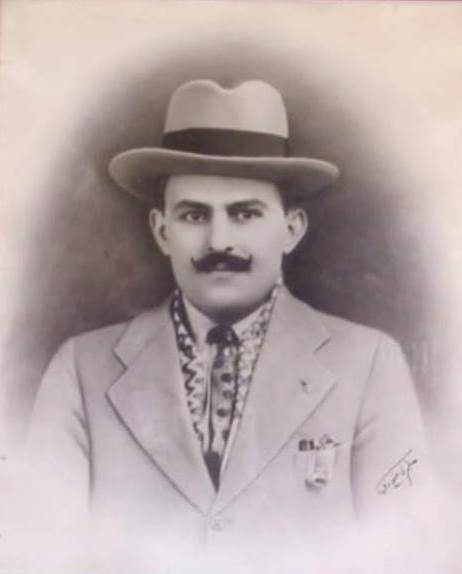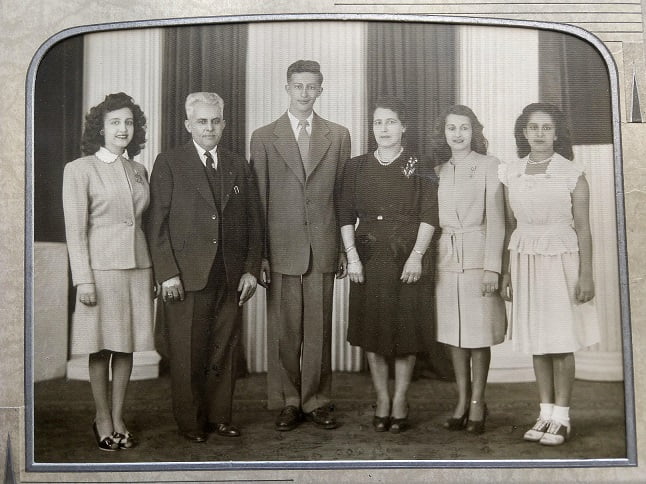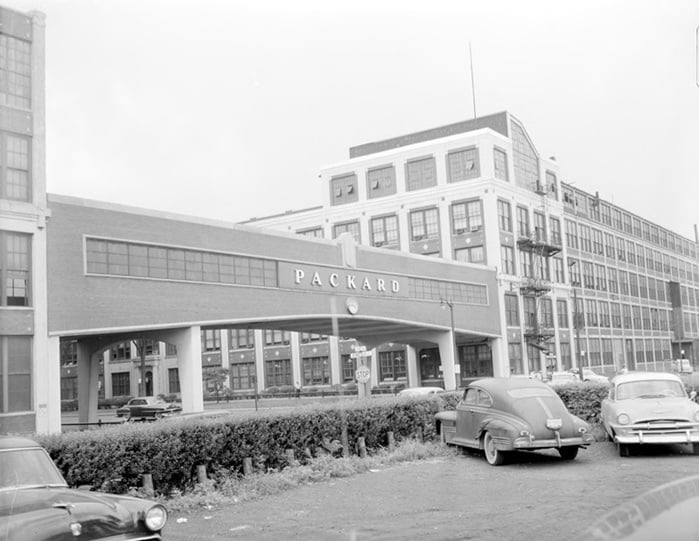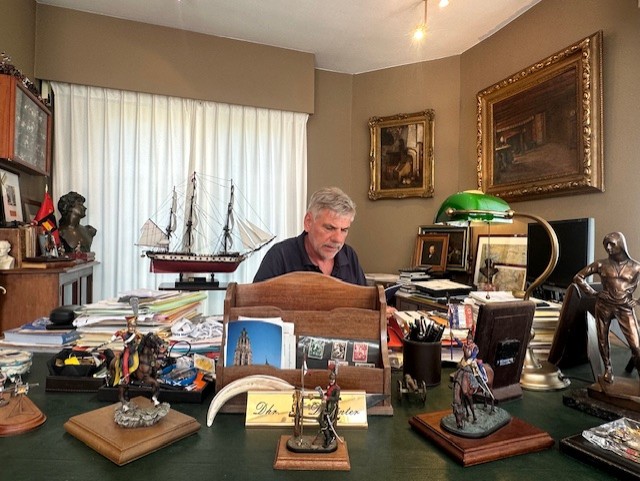
The year is 1910. A 17 year-old young man, Farris, with high ambitious dreams and a persistent attitude to pursue a better life for himself, away from the misery, hunger, and poverty that prevailed in most villages of Lebanon during the early 1900s, takes the decision to emigrate. To a new place for a fresh new start. He arrives in the United States of America.
By Samir Roger Makarem
Although the young Farris belonged to a family that was considered back then to be one of the well-off families in Mount Lebanon, owning land and livestock of respectable sizes, there was never a need for him to leave his village of ‘Bmohrey.’ However, for that 17 year-old Farris, it was solely the pursuit of personal ambitions and aspirations for a more adventurous and fulfilling life he wanted to build for himself.
Not knowing where in the world they would end up, Farris and a friend of his by the name of Joe, embark on this journey of travel together, leaving behind their village of ‘Bmohrey’ in Mount Lebanon, their families, friends, and their loved ones, including beautiful Latifa; a young lady he apparently had a crush on, based on one version of a story that I read in an email to my mom about 20 years ago when she was documenting the history of the family.
As a young man well into his adolescent years, Farris always had the dream of returning to Lebanon in a few years after saving enough money to marry that beautiful young lady called Latifa. However, little did he know that his friend, Joe, also had a secret crush on that same beautiful Latifa.
A Few months later, after sailing the seas and oceans, and in the early months of 1910, their boat docks in the port city of Providence, Rhode Island, in the United States of America, known to everyone back then as the ‘New World.’ This was truly very lucky for him as a lot of emigrants who left Lebanon at the turn of the twentieth century did not even have a clue where in the world they were heading to.
Oklahoma
Soon after he got to America however, Farris, heads to Oklahoma, for some reason that we, the family, never got to know exactly why he chose that particular state to begin with. But nevertheless, and while in Oklahoma, he immediately joins the United States Army in June of 1911 by falsifying his age to 22 in order to meet the requirements for enlistment apparently, and to be granted United States citizenship.
The interesting part of this little saga is the name change from ‘Abou Ghanem’ to ‘Mullin!’ It is said that during the registration process, the officer at that army base in Tahlequah, Oklahoma, who was in charge of getting enlistees registered for the army, had the freedom apparently, to make any changes to names that did not sound American enough.
‘Farris Melhim Abou Ghanem’ was the full name of that young man before he left Lebanon. Once arriving though to the United States of America, the name was then changed to ‘Farris Mullin.’ Story has it that the army officer at that army base in Oklahoma, having had difficulty pronouncing his last name, simply decided to drop the last name ‘Abou Ghanem.’ Since he also had a middle name (Melhim as his father’s name), the officer just decided to only stick with his first and middle names on the registration card.
During those days, there was a very popular comic strip in the Sunday paper where the main character was ‘Moon Mullin.’ Noticing that the middle name ‘Melhim’ somehow resembles the name ‘Mullin,’ the officer takes the liberty to replace the father’s name ‘Melhim’ with that typical all-American name ‘Mullin;’ and voila…his full name becomes ‘Farris Mullin’ with one quick stroke of a pen.
Of course immigrants, unfortunately, did not have the luxury to demand their names not be changed. Anyway, why would they? After all, that was the ‘New World’ and all they wanted was to fit in as quickly as possible into that all new American culture they are now becoming part of.

Latifa
While the years quickly passed by, and it was quite obvious that ‘Farris’ was not returning to Lebanon any time soon, beautiful ‘Latifa’, back in Lebanon, ends up getting married to someone else, a gentleman by the name of ‘Kassem’.
In 1918, the First World War ended and right after, ‘Farris’ was discharged from the army to pursue his new civilian life. He was still very young of course at that time, and he ‘back-packed’ selling notions (accessories sewn to buttons, snaps, and collar stays) in the mountains of Kentucky and West Virginia.
A Few years down the road, Farris Mullin moves to Detroit, Michigan to start his own business as a restaurateur. Back then, Detroit was becoming one of the most pursued cities in America for its automotive industry and most everyone wanted to be part of such a renaissance. The majority of Arabs, Poles, Italians, and German immigrants flooded to and settled in Detroit and its surrounding towns in the state of Michigan, to work in the plants built by Henry Ford.
Remember his friend Joe? Well, during World War One, when Farris was still enlisted in the army, story has it, and again in that same email that my mom received over 20 years ago, that his friend Joe heads back to Lebanon to marry ‘Latifa,’ that young lady they both left behind. Of course, all communication has now been completely lost between ‘Farris’ and ‘Joe’ ever since ‘Farris’ left to Oklahoma upon his arrival to the United States.
Once back in Lebanon, Joe finds out that Latifa had married Kassem. And again, story has it that Joe cunningly befriends Kassem and promises to arrange a trip for him to that ‘new world,’ known as the land of opportunities and wealth.
However, when poor Kassem sails off to the Unites States, it is said that the boat sinks and everyone loses their lives, including Kassem. How truthful this story is, nobody can confirm as we don’t have the name of the ship, or the year of travel to validate this version of the story.
Another interesting version of the story has it also, this is when Joe takes the opportunity to marry Latifa, that same beautiful young lady he also had a crush on. I just wish I have the last names of either Joe or Latifa… or the exact year and the name of the ship to verify such claims.
I guess this version of the story will forever remain a version of suspense, mystery, love, cunning, and drama, until someone comes forward with further investigation.
A bride for Farris
OK, back to Farris now. After numerous years of success as a businessman in Detroit, Michigan, the now the 27-year old goes back to Lebanon in 1923 to find a bride for himself. Of course, by now, he is aware of the marriage between ‘Joe’ and ‘Latifa.’ But this does not bother him anymore as time had passed and priorities had changed.
As the popular saying goes “everything happens for a good reason,” somehow, he hears of a very beautiful blond green-eyed young lady from the far-away village of ‘Ammatour’ in the ‘Shouf Mountains’ of Lebanon.
‘Nagela Yusif Abu Shakra’ was her name and she was 16 or 17 years old at the time when he first met her. It was love at first sight when he saw her coming out from school one day and he was determined that she would be his future bride. For him, she was just the perfect bride who would easily fit into his new culture with her all American-look type of person.
Farris and Nagela got married in 1924 and being the all-American successful businessman by now, he throws a beautiful wedding for Nagela where she comes out riding on a white horse on her wedding day. Moving now to her new village of ‘Bmohrey,’ Faris’ father, Mr. Melhim finds this the perfect opportunity to try and convince Farris to stay in Lebanon and not to ever consider going back to the U.S.

And why should he? Now, that Farris had amassed a lot of money, has gotten himself married to a bride from one of the fine families of Mount Lebanon, along with living a pretty decent lifestyle, his father is now more than ever convinced that he is back to Lebanon for good.
However, Farris’ new life is now in Detroit, Michigan, where he built himself a successful business along with a new lifestyle that he now considers to be his true home and culture.
Once he decides to go back to Detroit in 1925, Melhim, the dad, forbids Farris from taking Nagela with him to the United States. He just insists that his son would go back, sells the business and come back to spend the rest of his life in Lebanon with his bride Nagela.
By insisting that Nagela stay put in Lebanon, Melhim, the father, thought that such a strategy would convince Farris, now that he’s a successful businessman to live in Lebanon for the rest of his life.
That plan that he had thought of did not work out well: in 1926, Nagela gets on a train and heads straight to the port of Beirut and sails off to her new home in Detroit Michigan.
Wedding Chest
It’s worth noting here that her bridal wedding chest that she took with her on that trip to America, which is now 95 years old, has been shipped back to Lebanon and is now being displayed as a decorative piece in my Lebanon home in Aytat, Mount Lebanon. Having sailed to America on a first-class boat ticket, my grandfather, Farris, made sure to get her nothing but the best to make her travel as comfortable as possible.
In America, she had somehow lost her accent, and since she was a hazel green-eyed blond, she was considered American as soon as you looked at her. Although Farris tried to make life easy for her, the odds were really against her the very first years in the ‘New World.”
The Great Depression reigning strong, a new life completely foreign to her, and very little he could do, did not make life any easier for her during those few years upon arriving to the United States. The unfortunate events of this era were totally not to her expectations, and business in 1928 really suffered tremendously due to the subsequent repercussions of the stock market crash and the Great Depression years that followed afterwards.
But together, both Farris and Nagela were able to build a beautiful home with 4 children. Roger, Julia (my late mother), Mable, and Thelma were raised during the most severe years in America had ever experienced in history, yet in the most loving environment parents could ever provide for their children.

As they grew up, these four children lived a life exactly like others all around them. The only difference, as my mom, Julia once said, was that they had more ‘cousins’ and ‘aunts and uncles’ than anyone else around them.
Packard Automotive Assembly plant
As for Nagela, it is worth noting here also the many contributions she provided to her new community as a proud American citizen, one of which is her contribution to the war efforts of WWII. During the Second World War, she worked in the Packard Automotive Assembly plant in Detroit, Michigan.

The plant was converted in 1942 from building the all American luxury Packard Automobile to a war plant building airplane engines, which powered Mustang fighter planes and fighter bombers.
In addition, Nagela was also hailed by the United States Government as one of the “Rosie the Riveter” for her contributions to the War effort during World War II. Her role as a good American was just as important to her, as her role as a dedicated woman at home and in the Lebanese community.
22 years before I - Samir Roger Makarem - was born, my maternal grandfather Farris Mullin passed away (in 1956).
All I can say now is that I wish I have had the opportunity to meet such a proud personality.
For now, all I have are stories, some nice, some not too nice, to envision what a lifestyle he had endured during his lifetime. All information is based on family testimonials and various writings that my late mother, Julia Makarem, documented over the years.
Other historical articles from the same author:
A hidden pearl of Mount Lebanon: ‘If only walls could talk…’
The story of Sheikh Nassib Makarem (1889 – 1971), a distinguished Lebanese gentleman






Excellent story and worth to become a movie soon!